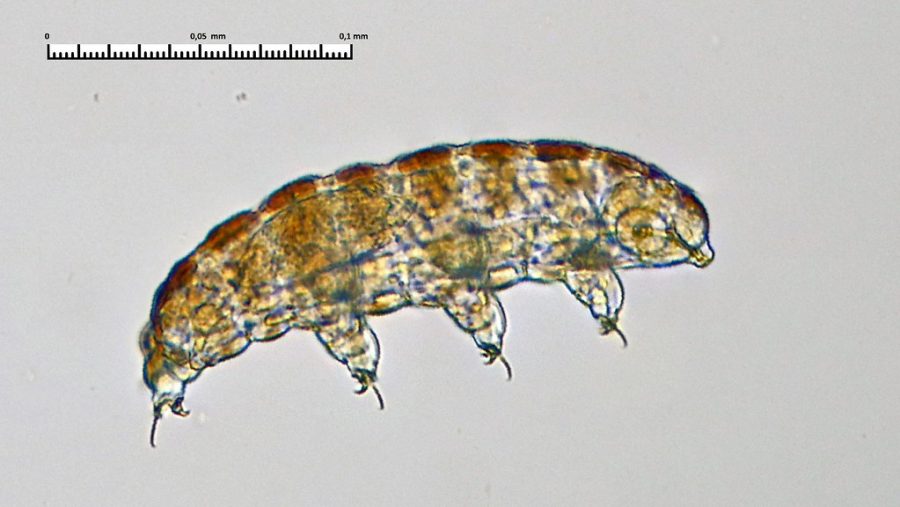Biology Blog: discover fascinating microscopic water-animals, the tardigrades
February 20, 2023
The tardigrade, or “water bear” is a multicellular, 8-legged, microscopic animal that can survive in extreme conditions. While their chance of death increases the longer they are in extreme environments, their range of tolerance is immense.
Tardigrades are always found in aquatic environments, often found in the film of water on mosses, sand dunes, soil, sediments, and leaf litter. These animals can survive temperatures as low as -328 degrees Fahrenheit and as high as 304 degrees Fahrenheit. They can tolerate altitudes over 19,600 feet above surface and 15,000 feet below surface. They have even survived without a space suit when they were brought out into the cosmos.
Extreme environments are not so extreme to the tardigrade because they also have the ability to go dormant in harsh conditions. In the “tun” state, tardigrades squeeze all the water out of their bodies and stop breathing, going completely dormant. This state can help tardigrades to live much longer, extending the life span from under two years to nearly 30 years.
These microscopic organisms have interesting anatomy as well. They lack a skeleton to allow for transition into the compact “tun” state, and they lack lungs since they absorb oxygen from their surrounding aquatic environments to breathe. Instead of teeth, tardigrades have two straw-like spears called stylets that are used to prick their prey and suck the insides out.
The diet of “water bears” includes tiny delicacies such as bacteria, algae, protozoans, nematodes, the innards of plant cells, and even other tardigrades. Depending on which of the three classes of tardigrade is in question, some are completely carnivorous.
Reproduction for these animals can be sexual or asexual, and when sexual, occurs externally during a molting period. The molted shell of the female tardigrade is used as a sac to hold the eggs and sperm. The asexual form of tardigrade reproduction occurs in the form of parthenogenesis, during which an embryo within an egg develops independently of any sperm.
With all of their unique adaptations and characteristics, tardigrades are tons of amazement all in a 1mm package!



